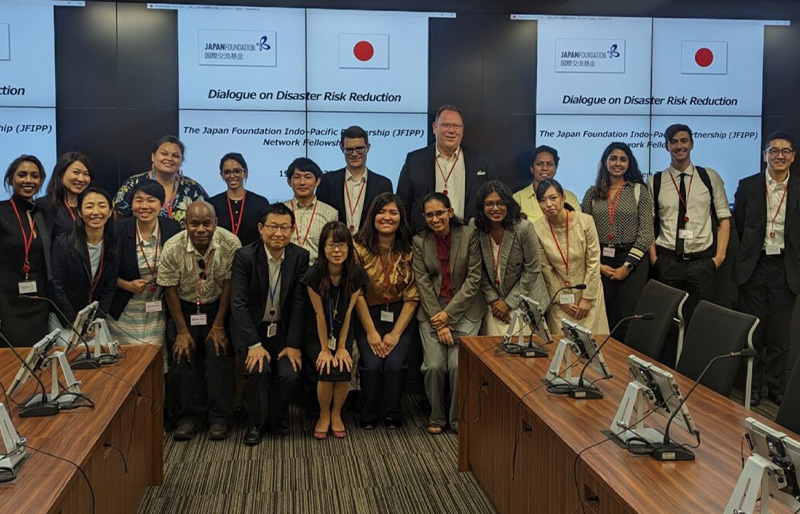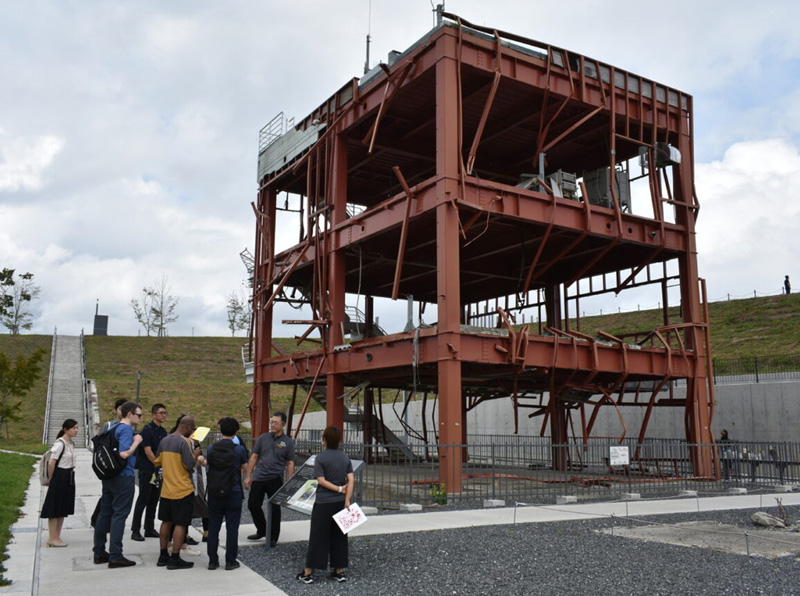In September 2023, the Australian Institute of International Affairs and the Japan Foundation hosted a week-long program in Japan for the Indo-Pacific Cooperation Network. The research tour and policy roundtable brought together a group of early-career disaster resilience practitioners from the Indo Pacific region.
Over the course of 12 months, the 2023 cohort of the Indo-Pacific Cooperation Network will focus on specific social and policy aspects of disaster resilience, and ultimately work to establish a piece of research as the end product from a series of tours and meetings across Japan, Australia and the South Pacific.
For the initial phase of the program, I joined 14 other early career practitioners from Australia, Japan, the Pacific Islands, Southeast Asia and America who met in Japan for a series of research tours, meetings and site visits. With disaster resilience as the focal point, we assessed how Japan prepares for, responds to and recovers from disasters that have struck in the past and preparations for future events. I was privileged to present on the work being done by AFAC, such as community preparedness and the Australian Fire Danger Rating System and the AFAC National Resource Sharing Centre including resource-sharing developments, and deployment activity.
Japan historically has been affected by multiple major earthquakes and tsunamis. This is due to its proximity to the Ring of Fire, a region that traverses the rim of the Pacific Ocean and the site of many volcanic eruptions and earthquakes every year. Due to this geography, Japan serves as one of the most tectonically active places on Earth. For context, every year Australia records on average 100 earthquakes that reach magnitude 3 or greater. Japan experiences between 1,500 and 2,000.
Attending the Cabinet Office Dialogue on Disaster Risk Reduction
Image: Gabriel Scomazzon
While statistics like this may be daunting for international observers, in Japan it has become embedded in daily life. News broadcasters run monthly simulations to prepare for these events. Citizens receive daily alerts via apps and television. Tourists receive safety information as part of tours around the cities. Disaster response is embedded into the Japanese psyche.
Australia’s history is marked by events such as 2019–20 bushfire season, Black Saturday (2009) and Ash Wednesday (1983). Equally, Japan has certain key events that are seared into memory: notably the Great Kanto Earthquake (1923), Typhoon Ise-wan (1959), the Great Hanshin-Awaji Earthquake (1995), and the most recent Great East Japan Earthquake or Tohoku Earthquake (2011).
It was the latter that served as the backdrop for our visit, as the impacts continue to echo through Japanese society and inform policymaking and emergency response procedure to this day. We may have our own statistics around the recent 2019–20 bushfire season event, but for Japan, this was the fifth most powerful in the history of seismology. It knocked the Earth 6.5 inches off its axis. It physically moved Japan 4 metres closer to America.
Visiting the site of the former local disaster management building at Minamisanriku, epicentre of the Tohoku Earthquake.
Image: Gabriel Scomazzon
When speaking to cabinet officials, media organisations and civil society groups about the earthquake response, the study group observed a shared resolve to honour the memory of those who had died by responding more effectively next time. Impacted sites were preserved to support this. For example, a school damaged by the Tohoku Earthquake has been frozen in time and space, rooms torn open, chalkboard remaining on walls and grass beginning to grow through the cracks. To outsiders it was confronting and sorrowful, but Japanese school groups would flow around us, learning about what had occurred and the changes that followed.
Such changes have been rapid and profound, with each disaster event adding further layers to Japan’s overall response procedures. The country has a highly centralised government structure and during an emergency command and control is reliant on a federal ‘top-down’ model. At present, their protocol dictates that within 120 minutes of a disaster occurring, the Cabinet Office dispatches a Cabinet Office Survey Team and establishes an on-site disaster management headquarters. The headquarters is comprised of the Prime Minister and all ministers of Cabinet to ensure one unified decision-making point.
Souvenirs from Australian International assistance in the wake of 3/11.
Image: Gabriel Scomazzon
Actions like these are possible because of the existence of Japan’s Disaster Countermeasures Basic Act (1961), which provides a comprehensive strategic disaster management system that is reviewed and revised following each subsequent major event. Japan has also legislated a Disaster Management Operation Plan (for each government agency/organisation), a Local Disaster Management Plan (for each prefectural Council) and a Community Disaster Management Plan (established between residents and businesses on a voluntary basis).
Support mechanisms exist in the form of Japan’s National Police Agency, Fire and Disaster Management Agency and Japan Coast Guard. The Self-Defence Forces (SDF) (equivalent to the Australian Defence Force) are also engaged. In contrast to Australia’s disaster arrangements, Japan has empowered its SDF to respond to domestic disaster relief as a core responsibility. This means they are mandated to have a certain amount of personnel, vehicles and equipment on standby and as a result have established capability zones across Japan.
In a manner similar to Australia’s international resource-sharing arrangements, Japan has recently signed a Reciprocal Access Agreement with Australia and has standing agreements with 8 other countries. These agreements function as military agreements to provide a legal framework for greater defence cooperation between the Australian Defence Force and the SDF during times of crisis.
There were many other elements to Japan’s preparedness, response, and relief efforts that were canvassed during our trip, however it was fitting that our final day closed with us learning about local community. The importance of reaching out to a neighbour, or helping at a local recovery centre, are universals that Japanese society has embraced as a matter of survival, but they are also principles the global community could and should embrace.





